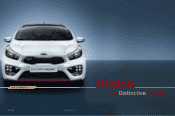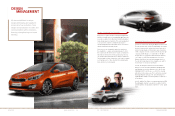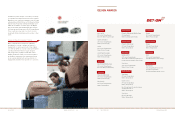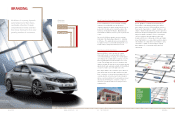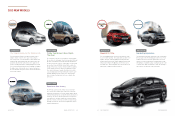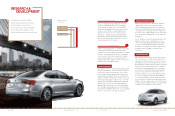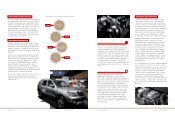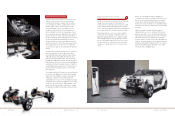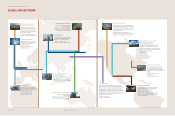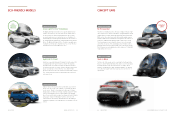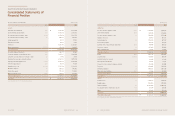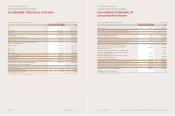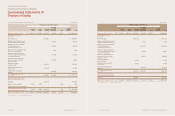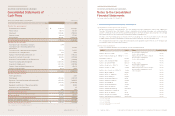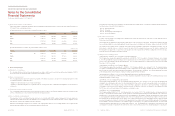Kia 2013 Annual Report Download - page 28
Download and view the complete annual report
Please find page 28 of the 2013 Kia annual report below. You can navigate through the pages in the report by either clicking on the pages listed below, or by using the keyword search tool below to find specific information within the annual report.
HEVs use two power sources, an internal combustion
engine and an electric motor, to maximize engine
efficiency and minimize carbon emissions. Kia Motors’
proprietary parallel hybrid system has a simple structure
– an engine clutch is installed between the engine and
the electric motor to enable driving in electric vehicle (EV)
mode, resulting in outstanding fuel economy and power
performance.
In 2013, Kia Motors released the premium Cadenza (K7)
Hybrid 700h which boasts outstanding fuel economy
of 16.0 km/ℓ, and the Optima (K5) Hybrid 500h with fuel
economy of 16.8 km/ℓ. Our hybrid line-up now ranges
from mid-size to semi large-size vehicles, and reinforces
the image of Kia as a leading eco-friendly vehicle
manufacturer.
Unlike a hybrid vehicle, which uses carbon-based fuel as
one of its power sources, an EV is powered by electric
energy alone; it therefore produces no emissions and no
direct CO2. We have developed a high-efficiency motor for
EVs that delivers as much power performance as gasoline-
powered vehicles, and with improved fuel economy by
increasing efficiency and minimizing losses, maximum
power output is 50 KW (68 horsepower) and maximum
torque is 17.0 kg·m (167 N·m). In December 2011, we
released the Ray EV, our very first EV, which was named
as a ‘Top 10 Technology’ at the Top 10 Green Awards
co-hosted by the Ministry of Knowledge Economy and
the Korea Institute of Energy Technology Evaluation and
Planning. In 2014, we plan to release the Soul EV in Korea
as well as in Europe and North America, thus building the
foundations of a real market for electric vehicles.
(Unit: KRW billion)
2012
2013
2011
We are constantly increasing our R&D investments to
ensure the sustainable growth of both our company
and the industry as a whole. In 2013, we made R&D
investments totaling KRW 1.43 trillion for a year-on-year
increase of 23.5%. We also created an R&D system
whereby our technology research centers in Europe
and the U.S. collaborate in great depth with Hyundai
Motor Group’s Technology Research Institute in Korea.
About 10,000 experts now concentrate their efforts on
researching automobile technology.
Kia Motors is preparing for the eco-friendly vehicle market
of the future by developing proprietary systems and
acquiring source technologies that will enable us to realize
the future of sustainable mobility. We use common parts
for our key major systems where appropriate, and place
great emphasis on R&D into eco-friendly vehicles. This
enables us to provide competitive vehicles, irrespective of
product model or geographical region.
EcoDynamics is the eco-friendly brand that brings together
all the best of Kia Motors’ green technologies. Launched
in 2009, and comprised of the term ‘Eco’ from ecology
and economy along with dynamics which embodies our
brand identity, EcoDynamics reflects our commitment to
making sustainable mobility a part of the value of our cars.
We introduced EcoDynamics with the release of the Forte
Hybrid in 2009, followed by the Optima (K5) Hybrid and
Ray EV in 2011. We have also been running a Mohave
hydrogen FCEV (Fuel Cell Electric Vehicle) pilot program
since 2008. By releasing hybrid versions of the Cadenza
(K7) and refreshed Optima (K5) in 2013, we are expanding
the base of the Korean eco-friendly vehicle market.


